- Home
- Graham Hancock
The Sign and the Seal Page 2
The Sign and the Seal Read online
Page 2
The advice that these thickset men were giving to the Ethiopian army in its campaign against Eritrean separatists did not, however, appear to us to be very good. Asmara’s hospitals were crammed to bursting point with casualties of the war and the government officials we met exuded an air of pessimism and tension.
Our concerns were heightened a few nights later in the bar of Asmara’s rather splendid Ambasoira Hotel where we met two Zambian pilots who were on temporary secondment to Ethiopian Airlines. They had thought that they were going to be spending six months expanding their practical experience of commercial flying. What they were actually doing, however, was ferrying injured soldiers from the battle fronts in Tigray and Eritrea to the hospitals in Asmara. They had tried to get the airline to release them from this hazardous duty; on checking the small print of their contracts, however, they had discovered that they were bound to do it.
After several weeks of almost continuous sorties in aged DC3 passenger planes converted to carry wounded troops, the two pilots were shell-shocked, shaky and embittered. They told us that they had both taken to the bottle to drown their sorrows: ‘I can’t sleep at night unless I’m completely drunk,’ one of them confided. ‘I keep getting these pictures passing through my mind of the things that I’ve seen.’ He went on to describe the teenage boy who, that morning, had been dragged aboard his aircraft with his left foot blown away by a mine, and another young soldier who had lost half his skull after a mortar bomb had exploded nearby. ‘The shrapnel wounds are the worst … people with huge injuries in their backs, stomachs, faces … it’s horrible … sometimes the whole cabin is just swilling with blood and guts … we carry as many as forty casualties at a time – way above the operating limits of a DC3, but we have to take the risk, we can’t just leave those people to die.’
They were required to fly three, sometimes four, missions each day, the other pilot now added. In the past week he had been twice to Axum and on both occasions his plane had been hit by machine-gun fire. ‘It’s a very difficult airport – a gravel runway surrounded by hills. The TPLF just sit up there and take pot-shots at us as we land and take off. They’re not fooled by the Ethiopian Airlines livery. They know we’re on military business …’
Overjoyed to have found some sympathetic non-Russian and non-Cuban foreigners to share their woes with, the Zambians had not yet asked us what we were doing in Ethiopia. They did so now, and seemed highly amused when we replied that we were producing a coffee-table book for the government. We then explained that we needed to get to Axum ourselves.
‘Why?’ they asked, dumbfounded.
‘Well, because it’s one of the oldest and most important archaeological sites and because it was there that Ethiopian Christianity first got started. It was the capital for hundreds of years. Our book’s going to look really sick without it.’
‘We might be able to take you,’ one of the pilots now suggested.
‘What – you mean when you next go to pick up wounded?’
‘No. You definitely wouldn’t be allowed on those flights. But a delegation of military top brass are supposed to be going there the day after tomorrow to inspect the garrison. Maybe you could hitch a ride then. It would depend on what sort of strings you’re able to pull back in Addis. Why don’t you check it out?’
Into Axum
We spent most of the next day on the telephone to Addis Ababa talking to the minister directly responsible for our project. It was touch and go, but his influence finally did get us seats on the flight that our Zambian friends had told us about. In the event, however, they were not to be our pilots; a fully Ethiopian crew was on board the DC3 for the short hop to Axum.
During the one-hour delay before our morning take-off from Asmara airport, and during the turbulent thirty-five-minute journey itself, I completed my background reading – reassuring myself in the process that the visit really was worthwhile.
The early historical references painted a picture of an important and cosmopolitan urban centre. In AD 64, for example, the anonymous author of a Greek trading manual known as the Periplus of the Erythrean Sea had referred to the Axumite ruler as being ‘a prince superior to most and educated with a knowledge of Greek’.9 Some hundreds of years later a certain Julian, ambassador of the Roman Emperor Justinian, described Axum in glowing terms as ‘the greatest city of all Ethiopia’. The king, he added, was almost naked, wearing only a garment of linen embroidered with gold from his waist to his loins and straps set with pearls over his back and stomach. He wore golden bracelets on his arms, a golden collar around his neck, and on his head a linen turban – also embroidered with gold – from which hung four fillets on either side. When receiving the ambassador’s credentials, this monarch apparently stood on a four-wheeled chariot drawn by four elephants; the body of the chariot was high and covered with gold plates.10
In the sixth century AD, a much-travelled Christian monk, Cosmas Indicopleustes, added further colour to the impression conveyed by Julian. After his visit to the city he reported that the ‘four-towered palace of the King of Ethiopia’ was adorned with ‘four brazen figures’ of a unicorn, as well as the skin of a rhinoceros ‘stuffed with chaff’. He also saw several giraffes which had been caught ‘by command of the King when young and tamed to make a show for his amusement’.11
These images of barbaric splendour well befitted the capital of what had by that time become the most important power between the Roman Empire and Persia – a power that sent its merchant navies as far afield as Egypt, India, Ceylon and China and that had adopted Christianity as its state religion as early as the fourth century AD.
The story of the conversion of Ethiopia is preserved in the writings of the fourth-century Byzantine theologian Rufinius – an authority highly regarded by modern historians. Apparently a certain Meropius, a Christian merchant described by Rufinius as a ‘philosopher of Tyre’, once made a voyage to India, taking with him two Syrian boys whom he was educating in ‘humane studies’. The elder was called Frumentius and the younger Aedesius. On their return journey through the Red Sea the ship was seized off the Ethiopian coast in an act of reprisal against the Eastern Roman Empire which had broken a treaty with the people of the area.
Meropius was killed in the fighting. The boys, however, survived and were taken to the Axumite King, Ella Amida, who promptly made Aedesius his cup-bearer and Frumentius – the more sagacious and prudent of the two – his treasurer and secretary. The boys were held in great honour and affection by the king who, however, died shortly afterwards leaving his widow and an infant son – Ezana – as his heir. Before his death, Ella Amida had given the two Syrians their freedom but now the widowed queen begged them, with tears in her eyes, to stay with her until her son came of age. She asked in particular for the help of Frumentius – for Aedesius, though loyal and honest at heart, was simple.
During the years that followed, the influence of Frumentius in the Axumite kingdom grew. He sought out such foreign traders who were Christians and urged them ‘to establish conventicles in various places to which they might resort for prayer.’ He also provided them with ‘whatever was needed, supplying sites for buildings and in every way promoting the growth of the seed of Christianity in the country.’
At around the time that Ezana finally ascended the throne, Aedesius returned to Tyre. Frumentius for his part journeyed to Alexandria, in Egypt – then a great centre of Christianity – where he informed Patriarch Athanasius of the work so far accomplished for the faith in Ethiopia. The young man begged the ecclesiastical leader ‘to look for some worthy man to send as bishop over the many Christians already congregated.’ Athanasius, having carefully weighed and considered the words of Frumentius, declared in a council of priests: ‘What other man shall we find in whom the spirit of God is as in thee who can accomplish these things?’ He therefore ‘consecrated him and bade him return in the Grace of God whence he came.’12
Frumentius accordingly went back to Axum as Ethiopia’s first Christian bisho
p and there he continued his missionary endeavours – which were rewarded, in the year AD 331, by the conversion of the king himself. The surviving coins of Ezana’s reign record the transition: the earlier ones bear crescent and disk images of the new and full moon; later examples are stamped uncompromisingly with the cross – amongst the earliest coins of any country to carry this Christian symbol.13
Important as the seed-bed of Ethiopian Christianity – and as the capital of the Ethiopian empire from the first until approximately the tenth century AD – Axum’s interest in terms of our project was nevertheless much broader than this. Here, I read, we would come across many imposing pre-Christian ruins of great archaeological merit (including the remains of several immense palaces), and also – still well preserved – the monuments for which the city was best known: its ancient obelisks, some more than two thousand years old, attesting to a high level of advancement in art and architecture at a date far earlier than that of any other civilization in sub-Saharan Africa. Nor were such physical artefacts the only witnesses to Axum’s unique stature. To my astonishment, the reference works I had with me reported that according to Ethiopian legends the Ark of the Covenant was kept here in a small chapel adjacent to an especially sacred church. The legends were connected to Ethiopia’s claim to have been the realm of the biblical Queen of Sheba but were generally dismissed by historians as preposterous fictions.
Having only recently seen the first Indiana Jones movie, Raiders of the Lost Ark, I was naturally intrigued by the possibility – however remote – that the most precious and mystical relic of Old Testament times, a relic believed to have been lost for almost three thousand years, might actually rest in the city I was about to visit. I therefore decided that I would not leave without learning more about this strange tradition and I looked down with renewed interest when the captain announced that Axum was directly beneath us.
The DC3’s descent to the narrow runway far below was unorthodox in the extreme – and quite alarming. Instead of the usual long, low and slow approach, the pilot brought the plane down very fast from a considerable altitude in a tight corkscrew pattern that kept us at all times directly above the town. This, one of the military men riding with us explained, was so as to minimize the time that we would be a target for snipers in the surrounding hills. I remembered what the Zambians had said about regularly getting hit by machine-gun fire when landing at Axum and prayed silently that this would not happen to us. It was an unpleasant feeling to be strapped into a flimsy seat in a narrow tube of metal hundreds of feet above the ground and to wonder whether, at any moment, bullets were going to start plunking through the cabin floor and walls.
Fortunately nothing so bad happened that morning and we touched down safely. I remember the red gravel of the strip, the dust that flew up as the wheels made contact, and the sight of large numbers of Ethiopian soldiers – all armed to the teeth and dressed in combat fatigues – staring at us intently as we taxied to a halt. I noticed other things as well: trenches had been dug on both sides of the runway and there were numerous pits, covered with camouflage netting, out of which protruded the barrels of heavy artillery pieces. I recall several armoured personnel carriers lined up near the tower and perhaps half-a-dozen Soviet tanks. Parked off to one side, on the apron, there were also two Mi-24 helicopter gunships with rocket pods visible beneath their stubby stabilizing fins.
From the beginning to the end of our visit, Axum never for a second shed the jittery and watchful atmosphere of a city under siege. We were permitted to stay only one night but we felt as though our time there was drawn-out, protracted, almost infinite.
Palaces, catacombs and obelisks
Our work began the moment that we arrived. Waiting to greet us as we stepped down from the plane was an elderly Abyssinian gentleman wearing a slightly threadbare three-piece suit and a most splendid patriarchal beard. In quaint but excellent English, he introduced himself as Berhane Meskel Zelelew and explained that he had been contacted by radio from Addis Ababa and ordered to guide us and act as our interpreter. He was employed, he said, by the Ministry of Culture ‘to keep an eye on the antiquities of Axum’. In this capacity he had helped the archaeologists from the British Institute in Eastern Africa whose excavations of some of the city’s most interesting ruins had been interrupted by the revolution of 1974.14 ‘It’s so nice to see other British people here after such a long time,’ he exclaimed as we introduced ourselves.
We climbed into a vintage Land Rover with a lime-green paint job and two neat bullet holes in the front windscreen. ‘Fortunately no one was killed,’ Zelelew reassured us when we asked him about these. Laughing nervously as we drove away from the airfield, I then explained what we had come to do, listed the historic sites that we wanted to visit, and told him that I was particularly intrigued by Axum’s claim to be the last resting place of the Ark of the Covenant.
‘Do you believe that the Ark is here?’ I asked.
‘Yes. Certainly.’
‘And where is it exactly?’
‘It is deposited in a chapel near the centre of the city.’
‘Is this chapel very old?’
‘No. Its construction was ordered by our late Emperor … in 1965 I think. Before that the relic had rested for many hundreds of years within the Holy of Holies of the nearby church of Saint Mary of Zion …’ Zelelew paused, then added: ‘Haile Selassie had a special interest in this matter, by the way … He was the two hundred and twenty-fifth direct-line descendant of Menelik, son of the Queen of Sheba and King Solomon. It was Menelik who brought the Ark of the Covenant to our country …’
I was all for visiting the chapel at once, but Zelelew persuaded me that there was little point in hurrying: ‘you will not be allowed anywhere near the Ark. Where it rests is holy ground. The monks and the citizens of Axum protect it and they would not hesitate to kill anyone who tried to break in. Just one man is allowed to enter and he is the monk responsible for guarding the Ark. We will try to meet him later today, but first let us go and see the Queen of Sheba’s palace.’
After we had assented to this attractive proposition we turned on to a bumpy, potholed road that – had we been able to follow it all the way – would eventually have led us hundreds of miles south-west, through the gigantic peaks and valleys of the Simien mountains, to the city of Gondar near Lake Tana. In open country barely a mile from the centre of Axum, however, we stopped within sight of an extensively fortified military post which, Zelelew explained, marked the limit of the government-controlled sector. He waved expressively at the nearby hills: ‘Everything else TPLF, so we cannot go. It’s a pity. There are so many interesting things to see … There, just around that corner in the road, are the granite quarries where all the stelae were cut. One still remains partially unexcavated from the rock. And there is a beautiful carving of a lioness. It is very ancient. It was put there before the coming of Christianity. But unfortunately we cannot reach it.’
‘How far is it exactly?’ I asked, tantalized.
‘Very close, less than three kilometres. But the military will not let us past the checkpoint and if they did we would certainly be taken by the guerillas. Even here we should not stand around for too long. Your foreign faces will be noticed by the TPLF snipers. They might think you are Russians and decide to shoot at you …’ He laughed: ‘That would be highly undesirable, would it not? Come, follow me.’
He led the way into fields to the north of the road and we quickly began to stumble across the remains of what must, once, have been an imposing building. ‘This was the Queen of Sheba’s palace,’ Zelelew announced proudly. ‘According to our traditions her name was Makeda and Axum was her capital. I know that foreigners do not accept that she was an Ethiopian at all. Nevertheless no other country has a stronger claim than ours.’
I asked whether any archaeology had ever been done on the site to test the legends.
‘Yes, in the late 1960s the Ethiopian Institute of Archaeology conducted some excavations here … I h
elped on the dig.’
‘And what was discovered?’
Zelelew made a mournful face. ‘The opinion was that the palace was not sufficiently old to have been the residence of the Queen of Sheba.’
What the archaeologists had unearthed, and what we now spent some time exploring, were the ruins of a great and well built edifice with finely mortared stone walls, deep foundations and an impressive drainage system. We saw a still-intact flagstone floor – which Zelelew claimed was a large throne room – and a number of stair-wells which hinted at the existence of at least one upper storey. There were also private bathing areas of sophisticated design and a well-preserved kitchen dominated by two brick ovens.
Across the road, in a field facing the palace, we then inspected a number of rough-hewn granite stelae, some standing more than fifteen feet high, some fallen and broken. Most were undecorated but one, the largest, was carved with four horizontal bands, each band topped by a row of circles in relief – like protruding beam ends in a building made of wood and stone. This crude obelisk, Zelelew told us, was thought by the townspeople to mark the grave of the Queen of Sheba. No excavation work had been carried out beneath it, however, and the field was now entirely given over to farmers who grew crops for the Axum garrison. Even as we talked we saw two peasant boys approach with an ox, which they harnessed to a wooden plough. Oblivious to the history that lay all around them, and apparently indifferent to our presence as well, they began to till the soil.

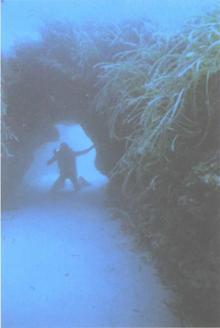 Underworld: The Mysterious Origins of Civilization
Underworld: The Mysterious Origins of Civilization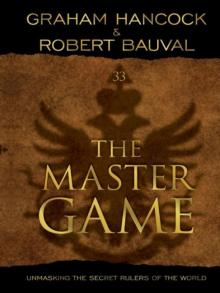 The Master Game: Unmasking the Secret Rulers of the World
The Master Game: Unmasking the Secret Rulers of the World America Before
America Before Entangled
Entangled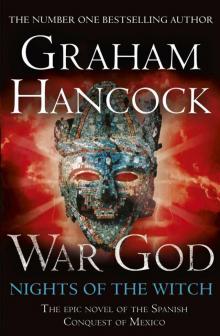 War God: Nights of the Witch
War God: Nights of the Witch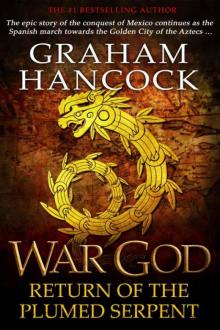 War God: Return of the Plumed Serpent
War God: Return of the Plumed Serpent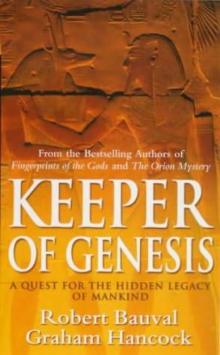 The Message of the Sphinx AKA Keeper of Genesis
The Message of the Sphinx AKA Keeper of Genesis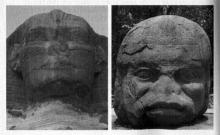 Fingerprints of the Gods
Fingerprints of the Gods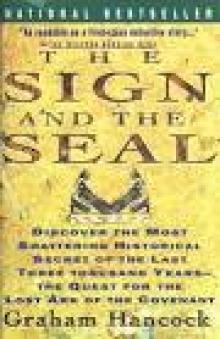 The Sign and the Seal
The Sign and the Seal The Mars Mystery: The Secret Connection Between Earth and the Red Planet
The Mars Mystery: The Secret Connection Between Earth and the Red Planet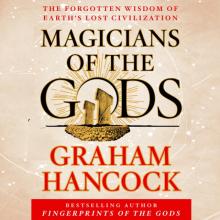 Magicians of the Gods: The Forgotten Wisdom of Earth's Lost Civilization
Magicians of the Gods: The Forgotten Wisdom of Earth's Lost Civilization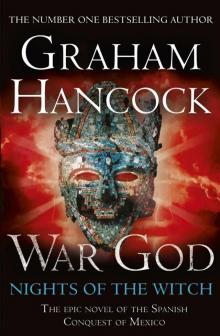 War God
War God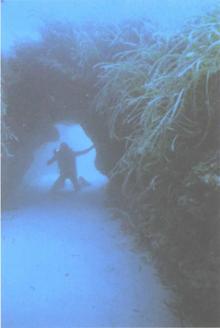 Underworld
Underworld The Mars Mystery
The Mars Mystery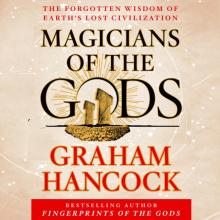 Magicians of the Gods
Magicians of the Gods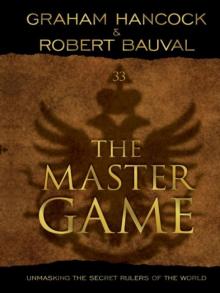 The Master Game
The Master Game